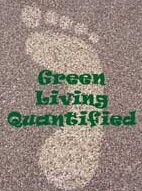My Experience
There may be some obvious places to add or improve insulation that makes sense even to amateurs. Once you understand the type you need and the best and safest way to install, go to it!
However, professionals know best: I took the energy efficiency auditor’s advice on where and how to add insulation. Usually, I first make the changes I know of, then invite the auditor to review my work and discover what I missed (usually a lot). In our case, the auditors found a few situations where there was no insulation (above a door, an old dairy drop-off location) that once fixed, really warmed up our cold spots.
Remember when you improve insulation, you are helping yourself both now and in the future as well as reducing your environmental footprint. Before you start, get a record of your previous year’s energy history from your energy provider. After you are done, I would love to see your before and after results!
Your Choices
Construction is usually built according to government code, and code has advanced over the years. However, code is the minimum and should not be construed as necessarily sufficient or best. Therefore, even in new homes, adding insulation may be well worth your effort. An energy auditor will make professional insulation recommendations, including potentially others not suggested here.
| Action Items and Links | Notes |
| Purchase Insulation Appropriate for Your Area | Brief description of insulation types and values |
| Add to Your Attic Insulation | May do yourself |
| Add to Wall Insulation | Requires professional installation |
| Parent Link: Ways to Save Energy | Considers other home energy efficiency possibilities |
Purchase Insulation Appropriate for Your Area
Insulation warmth is measured in R-value, and is always indicated on the packaging. Different climates have different recommendations for R-values, so local stores will likely indicate what ratings are useful in your neighborhood for walls, ground floors, and attics.
Different types of insulation include fiberglass, cellulose and rigid foam board. Fiberglass is itchy, but fairly easy to lay. Cellulose is primarily shredded newspaper, and warmer than fiberglass, but is usually blown in by experts into wall or other home cavities. Cellulose should not be used near anything flammable, such as a chimney or recessed lights. After laying fiberglass in an attic, it can be useful to sprinkle cellulose in the seams (Harley, 2012). Foam board is high-performance and rigid, but only 1 inch thick.
Add to Your Attic Insulation
For attics, R-38 is the minimum recommended, increasing for northern climates to R-50 or R-60 (Harley, 2012). To estimate your attic insulation level, determine the insulation type, learn its R-rating, and measure the thickness of the insulation. To add insulation, lay new batts down vertically across existing insulation (Amann et al., 2012). Harley (2012) says you will benefit the most from the first 6 inches of insulation but gain savings from the next 6 inches. Fiberglass and cellulose insulation must be fluffed to achieve the R-rating advertised on the packaging.
It is recommended to wear a respirator and safety glasses when installing new insulation, to protect yourself from the new – and any existing – insulation. Older insulation, such as brown and grainy vermiculite, may contain traces of dangerous asbestos.
Improve Wall Insulation
Homes built before 1960 may have little to no insulation in the walls. Cellulose insulation can be blown in by drilling holes in the external siding (wood, vinyl or shingle siding); filled holes may show in wood walls after completion unless covered with siding. During installation, someone should be inside monitoring for problems, e.g., insulation falling into the basement (Harley, 2012). Basement foundation walls also benefit from insulation but must be done expertly to avoid mold issues (Amann et al., 2012).
Also read section on Seal House Envelope for additional insulation ideas.
References
- Harley, Bruce (2012) Insulate and Weatherize for Energy Efficiency at Home. The Taunton Press, Newtown CT.
- Amann, Jennifer Thorne, Wilson, Alex, and Ackerly, Katie (2012) Consumer Guide to Home Energy Savings, 10th edition. New Society Publishers, Gabriola Island, BC Canada.
